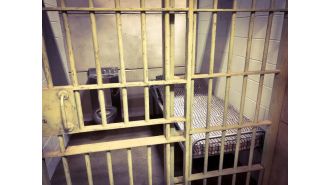Illinois Will Start Sharing Data About COVID-19 Outbreaks in Schools
As educators and parents assess the risk of returning to the classroom, some felt frustrated by the lack of public data about COVID-19 in schools. After a ProPublica and Chicago Tribune investigation, the state will start publishing the data.

Eight months into the pandemic and following pleas from educators and parents, Illinois has decided it will publish data on the coronavirus’s spread in schools.
The decision comes two weeks after a story by ProPublica Illinois and the Chicago Tribune detailed the lack of information available to school officials and parents as they try to decide whether in-person learning is safe. Illinois public health officials told reporters there had been outbreaks in at least 44 school buildings across the state but declined to say where.
Late Wednesday, an Illinois Department of Public Health spokeswoman said publicly for the first time that the state will start sharing the number of cases and outbreaks by school. An outbreak is defined as two or more cases tied to contact at school.
“We have been working to publish school-level data on COVID-19 and look forward to having that live in the coming weeks,” spokeswoman Melaney Arnold said.
That’s good news for school workers such as nurse Kathy Knawa, who is part of a team that has been helping Flossmoor School District 161, south of Chicago, decide when in-person classes should resume. When she tried to research COVID-19 outbreaks in schools that had already reopened, particularly near her district, she couldn’t find comprehensive state data about the number of cases or where they had been identified.
Instead, Knawa found the ProPublica Illinois/Tribune story, which explained how little was publicly known about school-connected outbreaks during the first seven weeks of the school year.
The lack of specific data from the state is frustrating to Knawa, whose district plans to have some students return to school buildings next week.
“I’m concerned we can’t find out where the outbreaks are,” Knawa said. “I just want to be able to get information in one place. If all the towns surrounding you were having outbreaks, it would be good to know.”
Many other states already publish data on outbreaks in schools. But Illinois so far has released only county-level data about COVID-19 cases in people younger than 20. That age range includes many college students, so it isn’t as helpful to parents and officials in K-12 school districts.
In many parts of Illinois, the school year began more than two months ago. Of the school-related outbreaks documented as of early October, most have been small — two or three cases at each school building — according to the state.
IDPH’s delay in making the data available comes as Illinois is grappling with a surge of COVID-19 cases in many communities. The increases have led some schools that had planned to reopen to delay until at least early next year.
On Tuesday, the Lake County Health Department recommended that public and private K-12 schools transition to remote online learning as the county reported “substantial” community transmission of the virus. In response, Grayslake schools decided to delay any decision to return to school until January, while school officials in Mundelein said they are reconsidering plans that would have put students back in the classroom in the coming weeks.
According to Illinois State Board of Education data, last updated in mid-September, about 685,000 students in 69% of districts are attending school in person at least part time. About 1.2 million students continue to learn online only, including at some of the state’s largest school districts.
Chicago Public Schools, by far Illinois\' biggest district, plans to bring back preschool and certain special education students during the second quarter, which begins next month. COVID-19 cases are rising in Chicago, but Chicago Mayor Lori Lightfoot said this week that transmission has been low in private schools that have reopened.
The district last week began posting the number of cases, with school locations, in an online COVID-19 tracker. The site, to be updated weekly, shows 172 adult and five student cases between March 7 and Oct. 10.
Other schools also post detailed information. Among them: New Trier Township High School District 203 and Crystal Lake District 47.
New Trier, in Chicago’s north suburbs, recently began phasing students in at partial capacity but quickly decided to close again because of increased community spread. The district updates an online dashboard twice a week with the number of cases among staff and students as well as the number in quarantine. Seven students and one staff member had active cases as of Monday, according to the dashboard, but officials say none of the cases was linked to transmission at school.
“Local health departments continue to be the best resource for the most up to date data as schools must report all cases directly to them. Most importantly, schools are also required to communicate with parents and guardians as new cases arise,” Arnold said.
Not all districts publicize COVID-19 information about their schools. In west suburban Addison, school social worker Maria Sinkule has been calling on district officials to share data about community and school transmission. Following a hybrid model, with children learning both in person and remotely, preschool and kindergarten students began returning to school earlier this week; older elementary students were to return Thursday.
“I want them to be transparent about what transmission looks like within schools and what are the supports in place for families that need help,” said Sinkule, who is also president of the Illinois Association of School Social Workers. “Some schools are looking out for the community, and there are others that don’t and they aren’t transparent. Without metrics, they can do what they want.”
It’s not clear when the health department will publish the data that educators are pushing for. Arnold promised data “in the coming weeks” but did not say more about the timing.
The state’s largest teachers union has called on IDPH to identify schools with COVID-19 outbreaks, saying “transparency is key.”
“How is a community supposed to decide whether to return to the classroom if they don’t know the true impact this is having across the state?” Illinois Education Association President Kathi Griffin said in a statement. “Health officials inform communities when nursing homes or jails have outbreaks because it impacts those who live and work there. Certainly, communities are entitled to know about outbreaks at schools. It shouldn’t even be a question.”






